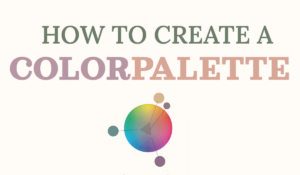Color psychology: We know that emotion affects your mood. Did you also know that color affects your emotions? This means that people are mentally, emotionally (and even physically!) manipulable through colors.
Let’s explore how we can use this, in combination with color theory, to our advantage when creating story-driven art.
Color psychology: How color impacts your artwork
What’s the story?
Have a look at the two images below. They are both the same, but the colors are different.


Which path would you walk by yourself, and which path would you rather walk with a friend?
The left image shows cool colors. Blues and greens dominate the picture. It gives an eerie look and feel. Maybe there’s something about to happen?
The right image shows warm colors. Reds and oranges are the dominant colors. It feels like a peaceful day in the fall.
By strategically using colors we can guide people’s emotions. This will amplify the impact our artwork has on the viewer which makes them remember our art.
Color psychology: meaning of colors in art
Just like each color can be cool or warm, each color can evoke a positive or negative feeling.
Red
Red is a very strong color. It evokes strong emotions and thus should be used cautiously. It’s great to draw attention to something.


Positive:
• Passion
• Excitement
• Power
Negative:
• Domination
• Violence
• Aggression
Yellow
Warm yellows are great for happy nature scenes. Cool yellows are great for tense environments.


Positive:
• Cheerful
• Intellectual
• Positivity
Negative:
• Anxiety
• Annoyance
• Critical
Orange
Orange goes very well with blue. It’s actually often used in color grading for movies. Orange is a bold color that can easily dominate an image. Great for villains.


Positive:
• Adventurous
• Warm
• Energizing
Negative:
• Ego-centric
• insincere
• passive-aggressive
Green
Green is often associated with nature. This is why we think of healing, abundance and safety. In contrast, green can be used in a negative way. Think of Maleficent!


Positive:
• Abundance
• Healing
• Safety
Negative:
• Envy
• Jealousy
• Greed
Blue
The versatility of blue is what I love about it. It can be either calming and serene, but also cold and scary.


Positive:
• Serene
• Stable
• Wisdom
Negative:
• Sadness
• Cold
• Solitude
Purple
Purple is known to be a color of royalty which is why it’s associated with nobility and respect. Frustration is another emotion that purple can evoke.


Positive:
• Spirituality
• Nobility
• Respect
Negative:
• Mystery (not necessarily negative)
• Unfairness
• Frustration
Monochromatic
A monochromatic color scheme is the use of a single color’s value range throughout an image. It’s very easy to read which makes it easy for the viewer to catch the mood.


It’s often used in concept art to emphasize the look and feel of a keymoment.
Pastels
We’ve learnt that colors exist out of 3 components: hue, value and saturation.

If we lighten the value of each hue and desaturate these hues we end up with pastels. Pastels are calm, serene and innocent. It’s often used for baby products.
Warm vs Cool colors
We can divide colors into 2 groups: the general warm group and the general cool group.
Warm colors

The general warm group includes: red, orange and yellow. Warm colors bring warmth and a feeling of safety. Use these colors if you want the viewer to feel like everything is alright.
Cool colors

The general cool group includes blue, green and purple. Cool colors can easily be used in nature scenes. Note that, like the image above, when you want to create a depressing/eerie/scary look you should desaturate your colors. Let your viewer know it’s not safe.
So now what? Use the information you just learnt to your advantage! Figure out what your story is. Then choose the right colors to amplify your message.
Play with the use of warm and cool colors. Use them alongside eachother to create contrast. Be careful not to mix cool with warm colors: this will cause muddiness in your paintings!
I hope that you found this article helpful. Feel free to browse around and catch up with me :) See you next time!
♡ Laura





You some how summed color theory into a easier way to understand. Thank you.
Just found your website and wow, so incredibly useful! Amazing, thanks a lot for your work!